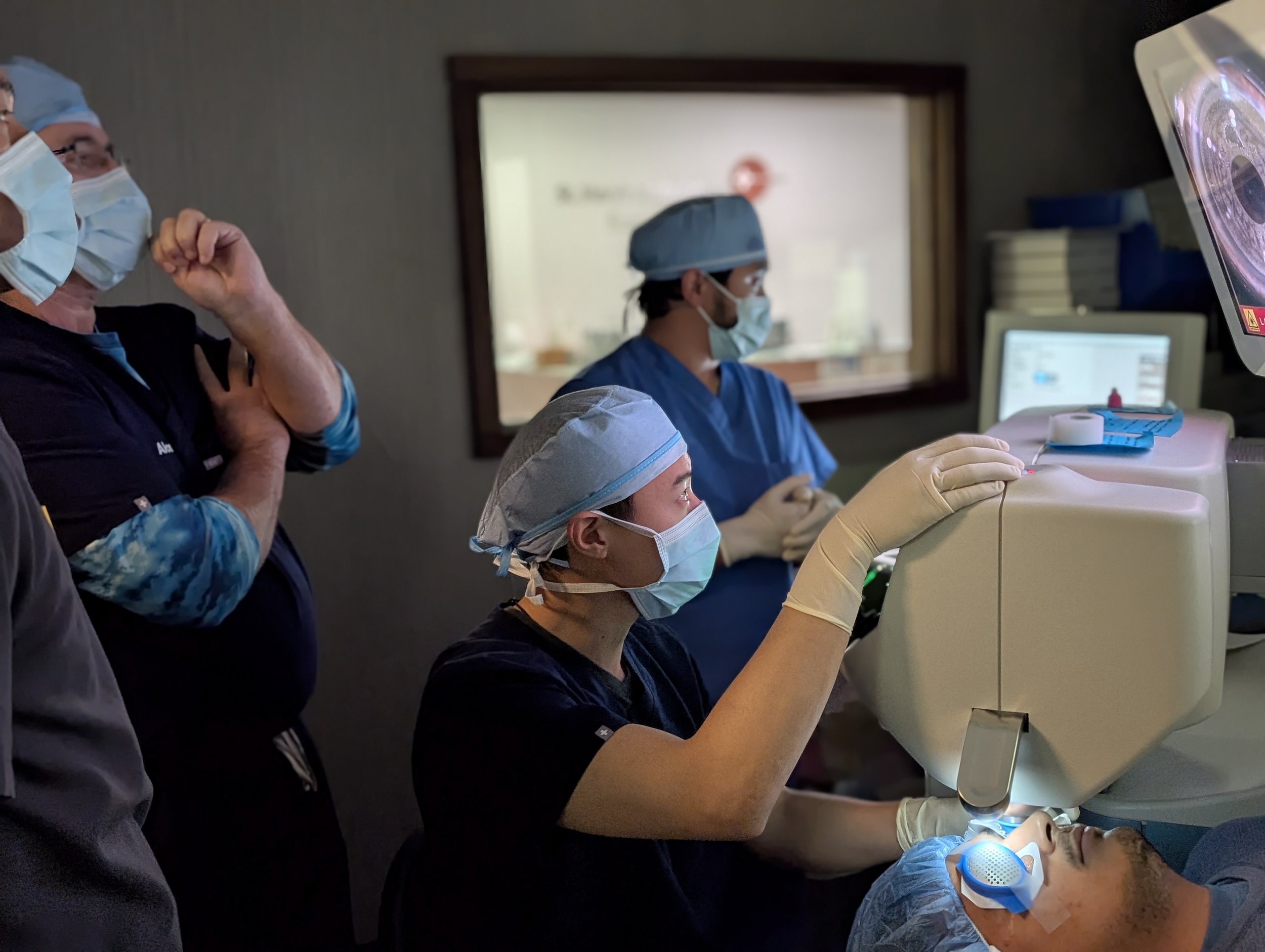
LASIK Laser Vision Correction
Your world, in focus
Safety
Dr. Jimmy Hu uses the most advanced laser technology for the greatest level of precision and safety.
Expertise
Dr. Jimmy Hu is an award-winning LASIK surgeon & refractive specialist.
Affordability
Cost and financing options
The Safest Custom LASIK Eye Surgery
Dr. Jimmy Hu performs bladeless, all-laser LASIK with the latest generation Femtosecond and Excimer laser platforms, with Iris-Registration tracking and Contoura topography-guided ablation. Read more about the technology here.
FAQs
-
LASIK typically has a recovery time of 24 hours, though most patients notice an almost-immediate improvement in their vision after the procedure. After the procedure, your vision is expected to further improve over the course of the next few days. You will be asked to take a nap once you get home after the procedure, which will further facilitate healing. Over the course of the following week, you may notice small fluctuations in your vision, which are a normal part of the healing process. Prescribed anti-inflammatory and lubricating drops will minimize post-procedural discomfort and speed-up the healing process. The majority of patients are seeing 20/20 the morning after their procedure and are able to return to work and most of their daily activities, including driving.
-
Anesthetic numbing drops are placed on the eye, so you won’t feel anything from the laser treatment. You may feel some light pressure during the procedure. Patients report feeling some mild discomfort and irritation following their LASIK procedure, but state it is tolerable. This irritation can be alleviated by the use of lubricating drops and over-the-counter pain relievers are prescribed by your surgeon. The discomfort is most noticeable in the few days immediately following the procedure and abate over time.
-
We understand that the concept of having someone do something to your eyes can be unsettling, but rest assured, you don’t experience pain. Since the eyes are easily numbed with anesthetic numbing drops, you won’t feel pain. Being asleep during LASIK eye surgery would actually be detrimental as in order for the cool-pulses of laser light to reshape the cornea in the right places of your eye, you will be asked to focus on a blinking light during the very short procedure (less than a 60 seconds per eye).
-
In most cases, yes! The results provided by LASIK eye surgery are expected to be permanent. However, there are rare instances where some regression of the improved vision presents the need for an enhancement laser vision correction procedure. Dr. Jimmy Hu offers peace of mind, as any medically-appropriate laser vision enhancements or re-treatments, are provided free of charge, to help you maintain your best-achieved vision results for the rest of your life.
-
Custom LASIK refers to the computational algorithms used in measuring the eye from front to back, creating a three-dimensional (3-D) image of the cornea. This corneal mapping, which is like the fingerprint of each patient’s eye, allows Dr. Jimmy Hu to treat refractive errors AND higher-order aberrations – irregularities on the cornea that act as lumps and bumps on a surface that ideally, would be smooth. These aberrations may lead to poor night vision, glares and haloes, starbursts, and low-contrast vision problems. Custom LASIK offers a quality of vision that surpasses the results of standard, or conventional LASIK, which uses a patient’s prescription alone as the guide in programming the laser. Patients after custom laser treatment have fewer issues with glare/haloes, if any.
-
Yes. Both Flexible Spending Accounts (FSA) and Health Spending Accounts (HSA) are approved for LASIK, as LASIK is considered a qualified medical procedure.
Refractive Services






